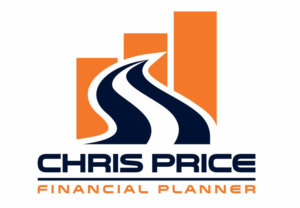POSTED ON June 19, 2024
By: Christopher Price

Solo 401(K) and government reporting
Solo 401(K) plans offer a powerful retirement savings option for self-employed individuals and small
business owners without employees other than a spouse. These plans allow you to invest up to $69,000
($76,500 if you are 50 or older) in 2024. These plans not only allow for substantial tax-deferred savings
but also provide flexibility in contributions and investment choices. However, managing a Solo 401(K)
entails certain responsibilities, including the potential requirement to file Form 5500 once plan assets
exceed a specific threshold. This guide will explore why this form is essential, who needs to file it, its
components, and how to file accurately and on time.
The Role and Importance of Form 5500
Form 5500 serves as a critical tool for the federal government to ensure that the plan complies with the
Employee Retirement Income Security Act (ERISA) regulations. It offers transparency about the plan’s
financial conditions and operations, aiming to protect the rights of plan participants. By providing a
public record of the plan’s activities, Form 5500 helps maintain trust in the retirement plan system.
Eligibility and Filing Requirements
Not all Solo 401(K) plans are required to file Form 5500—only those with plan assets exceeding
$250,000 at the end of the plan year. It’s crucial for plan administrators to evaluate their plan assets to
determine if they meet this filing requirement. Missing this assessment can lead to failure to file,
attracting penalties.
Comprehensive Breakdown of Form 5500 Components
Each section of Form 5500 is designed to capture specific information about the retirement plan:
Part I: Identification data includes details about the plan sponsor and administrator, which is vital for
contact and identification purposes.
Part II: Provides a snapshot of the plan’s structure and status, offering insights into who participates and
the benefits they receive.
Part III: Focuses on the financial aspects of the plan, such as total assets and liabilities, which are crucial
for evaluating the plan’s health and sustainability.
Schedules: These are additional forms that may be needed depending on the plan’s features and
activities throughout the year. For example, Schedule H or I involve financial information for larger plans
with more complex assets and transactions.
Steps for Filing Form 5500
Filing Form 5500 involves several detailed steps, which can be broken down to ensure clarity and
compliance:
Assessment: Regularly evaluate whether your plan meets the criteria that requires Form 5500 to be
filed.
Documentation: Accurately collect and review all necessary documents related to the plan’s financial
activities, participant data, and plan operations.
Filling Out the Form: Utilize the latest instructions from the IRS and DOL to accurately complete the
form and any applicable schedules.
Review and Audit: Before submission, thoroughly review the form to ensure all data is accurate and
complete. If your plan is subject to audit requirements, ensure a qualified independent accountant
audits the plan.
Electronic Filing: Submit the form via the EFAST2 system, ensuring that all electronic requirements are
met and that the filing is confirmed.
Avoiding Common Mistakes
Common errors include late filing, incorrect or incomplete information, and failing to file the correct
schedules. Strategies to avoid these mistakes include:
Implementing Organizational Systems: Keep detailed records and establish reminders for critical
deadlines.
Seeking Professional Advice: Engage with professionals who specialize in ERISA and retirement planning
to review your filing before submission.
Professional Assistance and Strategic Benefits
Enlisting the help of a financial advisor or accountant can provide peace of mind and ensure that your
filing is compliant. These professionals can also advise on how to use your Solo 401(K) strategically to
maximize your retirement savings and tax benefits.
Conclusion: Ensuring Strategic Compliance and Planning
Effectively managing and filing Form 5500 for your Solo 401(K) is more than a compliance requirement;
it is a cornerstone of strategic retirement planning. By understanding and adhering to filing
requirements, and perhaps with the aid of a professional, you can secure not only your compliance but
also optimize your retirement trajectory.
Representatives do not provide tax and/or legal advice. Any discussion of taxes is for general
informational purposes only, does not purport to be complete or cover every situation, and should not
be construed as legal, tax or accounting advice. Clients should confer with their qualified legal, tax and
accounting advisors as appropriate.
Securities and investment advisory services offered through qualified registered
representatives of MML Investors Services, LLC. Member SIPC. [link to www.SIPC.org on
electronic advertisements] 1000 Corporate Drive, Floor 7 Fort Lauderdale, FL 33334 Telephone # (954) 938-
8800
CRN202705-6471817






